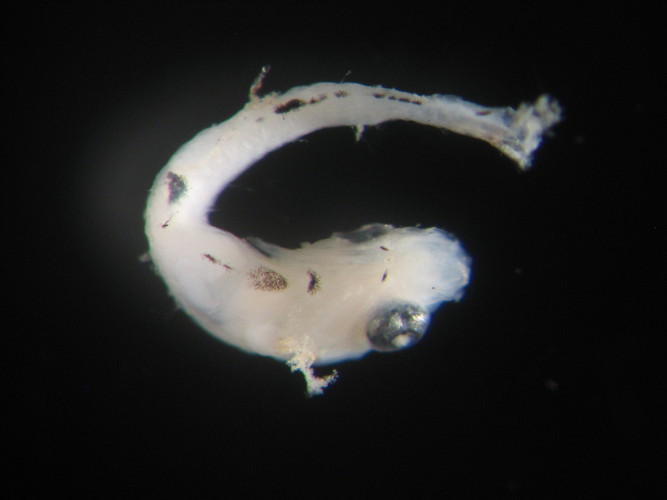The Wrack
The Wrack is the Wells Reserve blog, our collective logbook on the web.
The Wrack is the Wells Reserve blog, our collective logbook on the web.
It’s been 7 years since we started collecting larval fish and 3 years since our last update (See Team Larval Fish at the Wells Reserve) so it’s time for another look at the wonderful world of larval fish! We’ve had some exciting developments over that time and attended some professional meetings where we have made connections with other researchers working on early life stages of fishes.
The number of species we have encountered since our last post in 2012 jumped from 17 to 28 and the number of fish caught has increased dramatically from 745, with our total now at 5,599 fish! Our numbers received a huge boost when we netted 646 fish in a single sample on September 8, 2014. Of those, 553 were cunner, Tautogolabrus adspersus, with the remainder being Atlantic herring, Clupea harengus, rock gunnel, Pholis gunnellus, windowpane flounder, Scopthalamus aquosus, fourbeard rockling, Enchelyopus cimbrius and black sea bass, Centriopristis striata, making its return for a second year. The bass is of particular interest because it typically spawns in the warmer waters below Cape Cod but never in the cold waters of the Gulf of Maine. The appearance of this species in Wells Harbor may be correlated with rising ocean temperatures, so we will be watching it as a potential indicator of climate change.
 black sea bass larvae
black sea bass larvae
We have presented our data twice at New England Estuarine Research Society meetings, as well as the 2014 meeting of the American Fisheries Society in Quebec. The meeting in Quebec afforded plenty of networking opportunities and chances to meet with others looking to collaborate in the field of fisheries science.
We hope to work with NOAA fisheries scientist Jon Hare, whose agency holds a massive data set on offshore larval fish populations from years of sampling cruises conducted by the National Marine Fisheries Service. We hope to investigate the differences and similarities in our inshore estuaries data to the offshore data and see if there may be any movement between the populations.
We are also looking to help out Kenneth Able of Rutgers University by contributing our findings to a data set from his work and that of other collaborators along the Atlantic coast. This could shed light on potential range expansions of more southerly species, such as the black sea bass.
The work of Team Larval Fish shows no signs of slowing and data collection is planned for this entire summer. That’s the beauty of a long-term monitoring program and we aim to be there to document any changes and new findings. Here’s to another seven years!